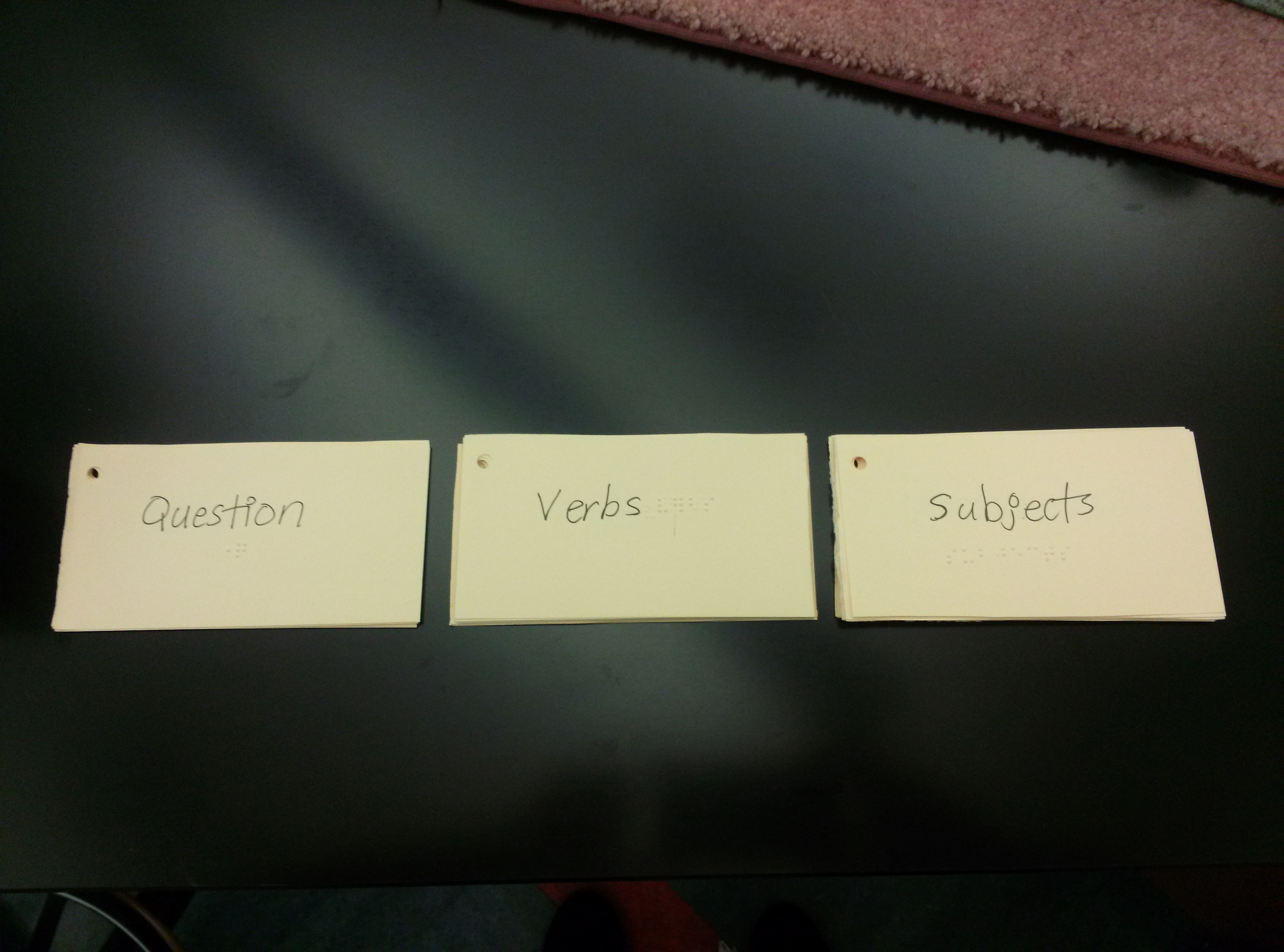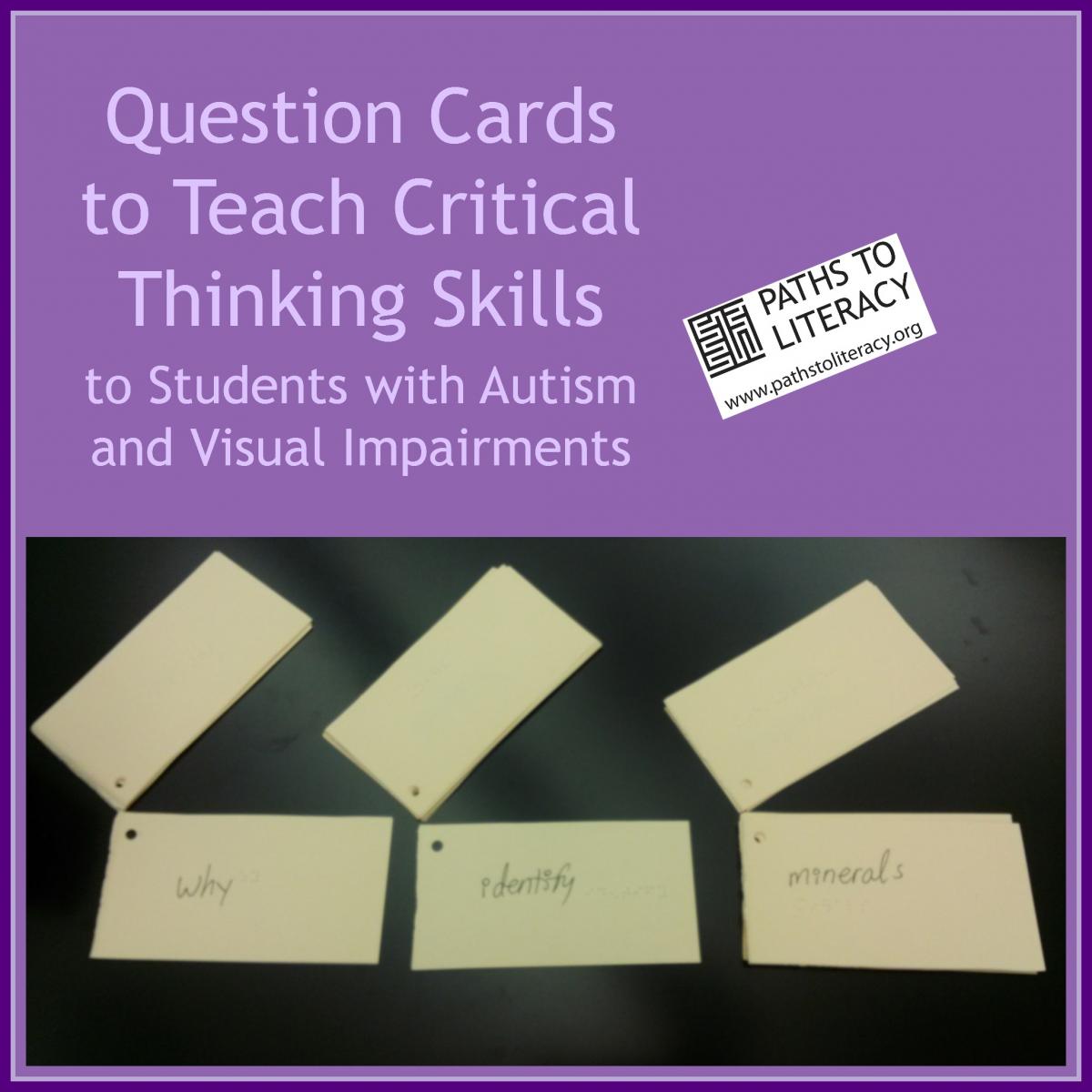Question Cards

Students with autism often need assistance communicating their thoughts. I use the QFT (Question Formulation Technique) in my teaching that encourages students to use and grow their critical thinking skills. In order for my autistic students to be able to participate I have created a question card system that works like sentence flip cards. Students can use them to create their own questions and take control of their learning. This can work for blind, low vision, ESL and students with multiple disabilities.
- index cards
- hole punch
- rings
1) Create question words and write them each on a separate index card and braille them (Who, What, When, Where, Why, How)
2) Do the same with verb word cards
3) Have the student create flash cards with their vocabulary from their content classes. These will be used as the subject cards.
4) Hole punch all cards in the same spot
5) Place a ring around each set: question cards, verb cards, and subject cards
6) Place each stack side by side on the table in front of the student
Order: Question - Verb - Subject
Have the student read through the question cards and pick one. They will flip through and then once choosen a word it will go face up in the same question position where it started.
7) The student will do the same with the verb and subject cards
8) Once finished they can read their question and write it on their own paper.
9) Once finished making question about their topic they will choose the 3 questions that will be best for what they want to do (create an experiment, do a report, make an article, etc.)
10) Go through their questions and ask if they are open-ended or close ended (Might need to review what each means, close ended has a definite answer, open does not)
11) Next, the student can start researching in order to find the answers to their questions and create their project (experiment, activity, report...etc)
TIP: It helps to categorize the subject cards by topics such as Space Exploration, Geological Processes, Astronomy, etc. The librarian is a great resource for finding and getting publications in different forms.
1) Can use large print for low vision students
2) Can use pictures for ESL, young students, and students with multiple disabilities

